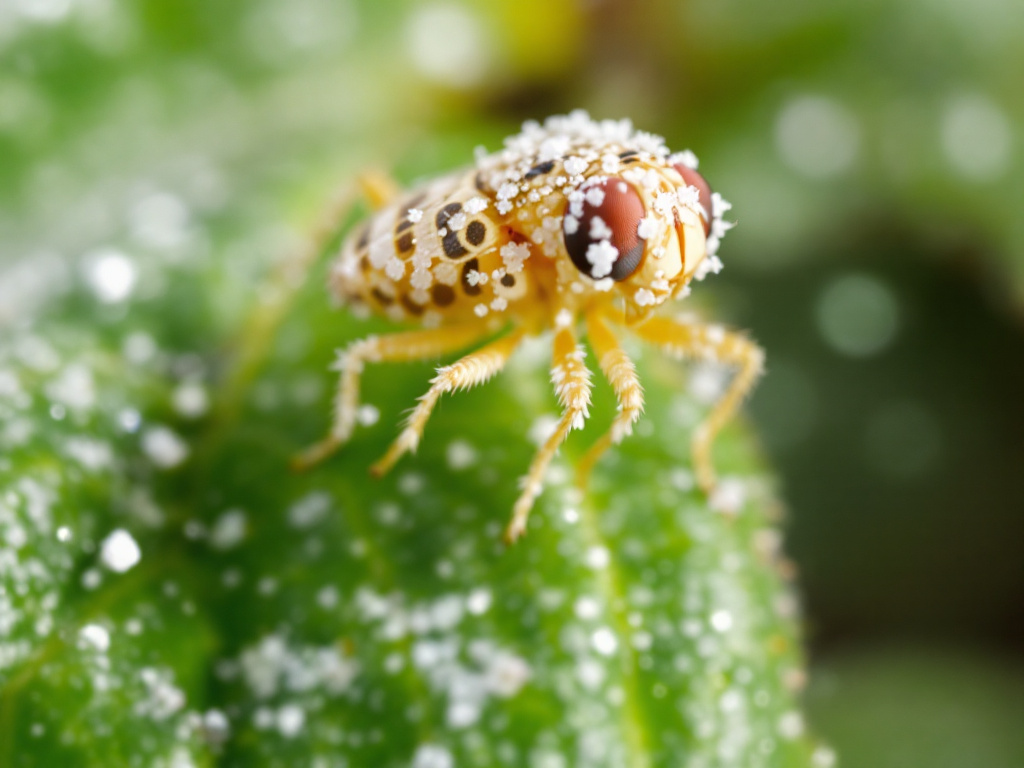Image generated by flux-ai.io & content generated by ChatGPT Version 4o-mini
If you’ve noticed tiny white specks fluttering around your garden or the leaves of your favorite ficus trees in Martin County, you may have encountered an unwelcome guest known as the ficus whitefly, scientifically called Singhiella simplex. This tiny insect is more than just a nuisance; it can cause real harm to your plants. Recently, researchers from the University of Florida released a detailed identification guide that can help residents recognize and manage this pest effectively.
What is the Ficus Whitefly?
The ficus whitefly is a small insect that feeds on the sap of ficus plants, which are popular in many local gardens and landscapes. These pests are particularly fond of the Ficus benjamina, commonly known as the weeping fig, which you might see in parks or around homes in Martin County. When these whiteflies suck the sap from the leaves, it can lead to yellowing and dropping of leaves, weakening the plant over time.
Why Should You Care?
For residents in Martin County, where gardening and landscaping are common hobbies, the ficus whitefly poses a serious threat to our local flora. The market value of agricultural products in our county, which includes many ornamental plants, is substantial—about $120.99 million in 2022. Keeping our gardens healthy is not only important for aesthetics but also for preserving property value and supporting local businesses that rely on landscaping and gardening.
How to Identify Them
The guide provided by the researchers outlines several key features to help you identify the ficus whitefly. They are tiny—about the size of a pinhead—and have a distinctive white, waxy coating that makes them look like little specks of cotton. You can often find them on the undersides of leaves, where they settle down to feed.
If you suspect that your plants are infested, check for yellowing leaves or tiny black spots on the upper side, which are the droppings of the whiteflies. This “honeydew” can lead to sooty mold, a black fungus that can cover the leaves and hinder photosynthesis, making it harder for your plants to thrive.
What Can You Do?
If you do spot these pests, don’t panic! There are effective ways to manage an infestation while being mindful of the ecosystem. The guide recommends several strategies:
-
Physical Removal: Gently spray your plants with a strong stream of water to knock the whiteflies off. This works best for lighter infestations and helps maintain beneficial insects.
-
Insecticidal Soap: Using insecticidal soap can help eliminate these pests without harming beneficial insects. Make sure to follow the instructions carefully and consider the necessity of treatment, as some minor damage is acceptable in a balanced ecosystem.
-
Natural Predators: Consider introducing natural predators, such as ladybugs or lacewings, which will feast on the whiteflies. Encouraging these beneficial insects is crucial for managing pest populations naturally.
-
Regular Monitoring: Keep an eye on your plants, especially during warmer months when whiteflies are more active. Frequently inspecting plants helps detect pest problems early before significant damage occurs.
Community Resources
For residents of Martin County, the local extension office is a great resource for information on pest management and sustainable gardening practices. They can provide additional tips and materials to help you protect your garden while promoting a healthy ecosystem.
In conclusion, while the ficus whitefly may be small, it poses a significant threat to our gardens and landscapes in Martin County. By learning to identify and manage this pest responsibly, we can keep our plants healthy and vibrant while supporting beneficial insects in our environment. So, keep your eyes peeled, and don’t let the whiteflies take over your garden!
References
ENY993/IN1203: Pest Identification Guide: Ficus Whitefly—Singhiella simplex. (n.d.). Ask IFAS – Powered by EDIS. https://edis.ifas.ufl.edu/publication/IN1203

